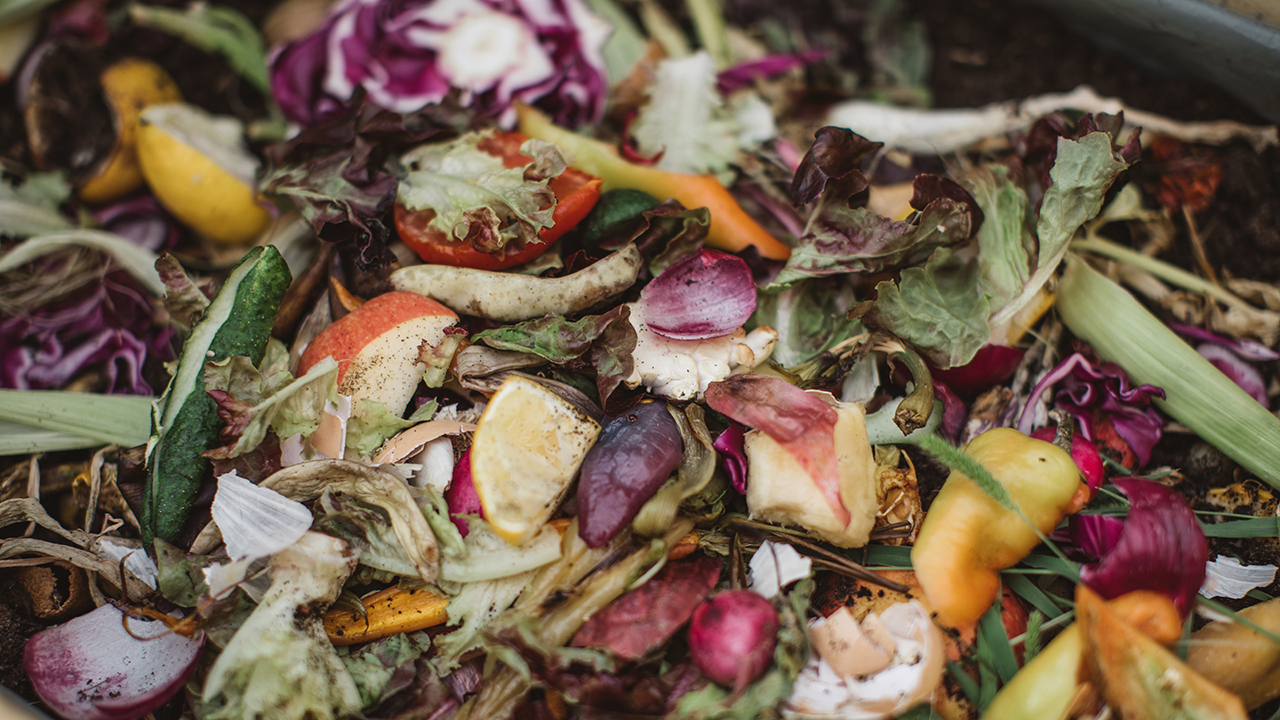
Spoiled food, manure, sewage—for most people, the less time thinking about these things, the better. For scientists at the University of Minnesota, however, these forms of waste hold enormous potential.
Right now, a team of researchers from the U’s BioTechnology Institute, with funding from MnDRIVE Environment, are looking to turn organic waste into heat, energy, and fertilizer. These systems, called anaerobic digesters, have started to be implemented across a broader range of settings than before—such as wastewater treatment facilities, farms, and food waste facilities—to create renewable resources from waste and reduce the amount of greenhouse gases in the atmosphere.
The team is led by Bo Hu, PhD, associate professor of bioproducts and biosystems engineering in the College of Food, Agricultural, and Natural Resource Sciences, and Timothy LaPara, PhD, professor of civil, environmental, and geo- engineering in the College of Science and Engineering.
Anaerobic digesters use a system of airtight tanks containing communities of microbes to break down organic waste. As the microbes “digest” the waste, they create a mixture of methane and carbon dioxide, known as “biogas,” which is often collected in an attached bag for use as a fuel. The microbes also produce heat and leave behind solid matter rich in nutrients like nitrogen, phosphorus, and potassium that is ideal for use as a fertilizer and other soil amendments.
The process is different from traditional composting, which takes place aerobically (with air) and only captures the solid nutrients. Composting systems allow the methane and carbon dioxide produced to escape into the environment, adding to the greenhouse gases in the atmosphere. In anaerobic digestion, this biogas can be collected and harnessed. Biogas can be used as a fuel to create electricity, for example, or refined into renewable natural gas that can then be integrated into the regional natural gas supply chain.
Making Use of Spoiled Food
Anaerobic digestion may provide a new solution for a local organization’s food waste problem.
Second Harvest Heartland, a Twin Cities-based food bank, sources its stock from manufacturers, farmers, hotels, restaurants, and food drives. While most of the food that reaches the organization’s Brooklyn Park warehouse is nutritious and ready to eat, some of it has inevitably spoiled and must be discarded. That portion adds up over time, forcing Second Harvest to dispose of 2 to 4 million pounds of food waste a year, at a cost of about $200,000.
Through a MnDRIVE Environment demonstration grant, Hu and LaPara have designed and set up a pilot-scale system at the organization’s warehouse with the goal of illustrating how such a system could reduce costs from discarding spoiled food.
“We compared solid digesters and liquid digesters, and we eventually came up with a hybrid, two-stage digester system,” Hu said, adding that the hybrid system produces more biogas. “By having the data generated from the pilot scale, we can do an estimation of how the full-scale operation of the digester will work in the Brooklyn Park facility.”
If successful, the electricity and heat produced through the system could offset 70 percent of Second Harvest’s energy usage at the warehouse, according to estimates by Hu. The organization may also be able to sell the fertilizer the system produces to growers, further supporting its own operations and the production of more nutritious produce. The researchers will also advise Second Harvest on installing a full-scale anaerobic digestion facility to serve as a more permanent solution.
Second Harvest isn’t the only organization with anaerobic digestion on the mind. Hennepin County, Minnesota’s most populous county, sees it as one part of an ongoing effort to divert organic waste from the solid waste stream that ends up in landfills. Meanwhile, CenterPoint Energy, the state’s largest natural gas distributor, is exploring how to enhance its portfolio of natural gas products and services, with renewable natural gas as one part of the equation.
Hurdles do remain, however, before anaerobic digestion truly takes flight. The current low cost of natural gas makes it less appealing to invest significant capital to produce renewable natural gas, regardless of whether the anaerobic digester will be on a farm, at a wastewater treatment facility, or at a food bank. State and federal policies may be needed to incentivize anaerobic digestion and the production of renewable natural gas to replace “fossil” gas in distribution pipelines. Still, these projects show how repurposing materials we typically discard can create a greener economy in Minnesota, said Jeff Standish, PhD, MnDRIVE Environment industry liaison.
“Ultimately, how do we reshape our economy to be more circular and sustainable?” Standish said. “We need to take advantage of this technology and the sustainability and efficiency that it provides in managing organic waste.”
Interested in learning more about anaerobic digestion? Watch the recent Hennepin University Partnership webinar on anaerobic digestion, covering this project and more.
University faculty researchers and external stakeholders who would like to participate in future discussions about anaerobic digestion and renewable natural gas should email Jeff Standish at standish@umn.edu with subject line “AD / RNG Stakeholder List” or visit the MnDRIVE Environment events page to learn about upcoming discussions.